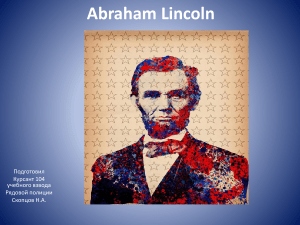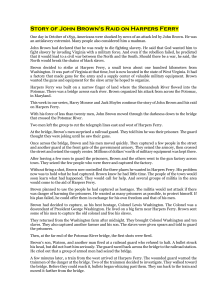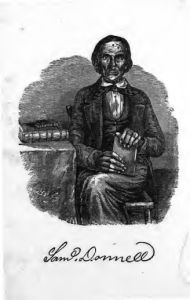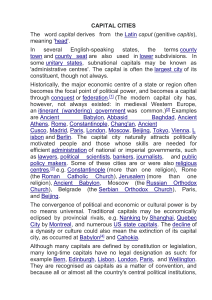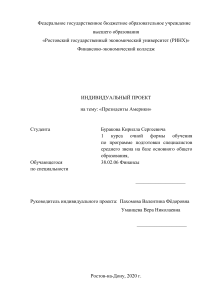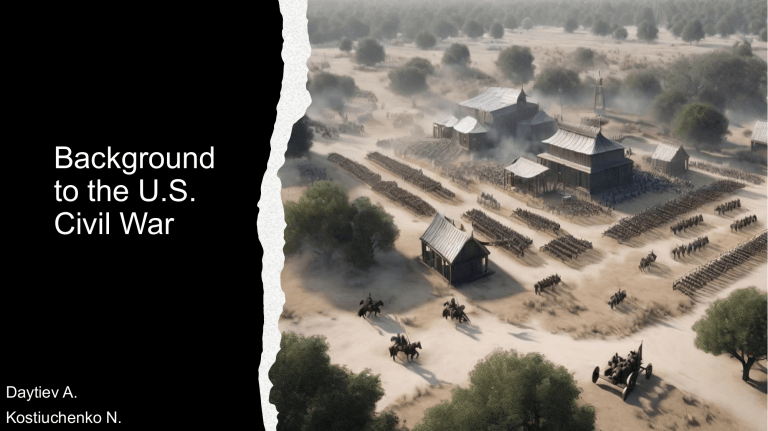
Background to the U.S. Civil War Daytiev A. Kostiuchenko N. • Slavery • The North and the South had different views on the institution of slavery. • States' Rights • Southern states believed in the right to secede from the Union. • Economic Differences • The North was industrialized, while the South relied heavily on agriculture, particularly cotton. Causes of the Civil War • Political Disagreements • Differences in political ideologies and the election of Abraham Lincoln as President were key factors. The Missouri Compromise • The Missouri Compromise was an important legislative measure passed in 1820 to address the issue of slavery in new territories. It established a boundary line that prohibited slavery north of the line and allowed it south of the line. Provisions Details Missouri as a Slave State Missouri would be admitted to the Union as a slave state. Maine as a Free State Maine would be admitted to the Union as a free state, maintaining the balance between free and slave states. Slavery Prohibited in the Louisiana Territory Slavery would be prohibited in the rest of the Louisiana Territory north of the 36°30' parallel, except for Missouri. The Compromise of 1850 • The Compromise of 1850 was a set of laws passed to address the issue of slavery in newly acquired territories from the MexicanAmerican War. • The Fugitive Slave Act was a provision of the Compromise of 1850 that required the return of escaped slaves to their owners, even in free states. • The Compromise of 1850 also included the admission of California as a free state, which upset the balance of power between free and slave states. Provision Description Fugitive Slave Act Required the return of escaped slaves to their owners, even in free states. Admission of California as a free state Upset the balance of power between free and slave states. The Kansas-Nebraska Act • Impact of the Kansas-Nebraska Act • Expansion of Slavery: The act allowed the possibility of slavery in territories previously designated as free, leading to an expansion of slavery into new areas. • Bleeding Kansas: The act sparked violent conflicts between proslavery and anti-slavery factions in Kansas, known as Bleeding Kansas, which foreshadowed the Civil War. • Political Polarization: The act deepened the divide between the North and the South, intensifying tensions over the issue of slavery and contributing to the outbreak of the Civil War. The Dred Scott Decision • Implications of the Decision • Enslaved individuals were denied the rights of citizenship and considered property. • The decision further entrenched the institution of slavery in the United States. • Controversies Surrounding the Decision • The decision was seen as a setback for the abolitionist movement and sparked outrage among anti-slavery activists. • The ruling was highly divisive and contributed to the growing tensions between the North and South in the lead-up to the Civil War. John Brown's Raid on Harpers Ferry • John Brown's Raid on Harpers Ferry took place on October 16-18, 1859, in Harpers Ferry, Virginia (now West Virginia). • Brown and a group of 21 men, including free African Americans and escaped slaves, seized the federal armory and arsenal at Harpers Ferry with the intention of starting a slave rebellion. • The raid was quickly suppressed by local militia and U.S. Marines led by Colonel Robert E. Lee. Brown and his surviving followers were captured and later executed. • The raid had a significant impact on the national conversation about slavery and played a role in the lead-up to the American Civil War. The Election of Abraham Lincoln • The election of Abraham Lincoln as President in 1860 was a major factor leading to the secession of Southern states. • Lincoln's victory in the election represented a threat to the institution of slavery, which was deeply entrenched in the Southern states. • Southern states believed that Lincoln's presidency would lead to the erosion of their rights and the expansion of federal power over slavery. • The election of Lincoln intensified the already existing tensions between the North and the South, ultimately leading to the outbreak of the Civil War. Secession and the Formation of the Confederacy • Secession of Southern states was the final step that led to the outbreak of the U.S. Civil War. • Southern states, primarily from the Deep South, seceded from the Union in response to the election of Abraham Lincoln as President in 1860. • Secession was driven by various factors including disagreements over states' rights, slavery, and cultural differences between the North and South. • The seceding states formed the Confederate States of America, with Jefferson Davis as its president, and adopted their own constitution.


